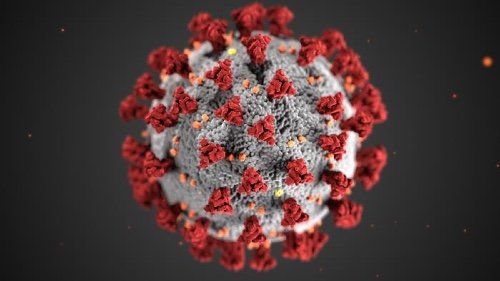The Continuing Evolution of CT Use During COVID-19
Departments and practices must be prepared for the impending influx of imaging.


A lack of available COVID-19 testing in the United States has many asking the question, could we be using CT scans to rapidly diagnose patients instead? This question has attracted both attention and conflict.
Initially, research emerging from Wuhan showed that 97 percent of cases with a COVID-19 diagnosis had CT findings consistent with pneumonia and shared that, “CT imaging has high sensitivity for diagnosis of COVID-19.” However, a recent critical review in the American Journal of Roentgenology called for CT imaging to be used only in cases of complex pneumonia. Currently, the authors believe that we do not have enough data to support the use of CT scans for diagnosis and that using the machines can pose additional risks for healthcare workers on the frontlines or potentially expose healthy patients to the disease.
The authors shared, “These risks include: overuse of hospital resources, including the use of protective gear that is already limited in availability but is required to safely perform CT studies; clustering of affected and unaffected patients in imaging departments, thereby potentially increasing risks of disease transmission and exposure among staff performing the examinations; patients for other indications because of increased use of CT scanners to evaluate cases of suspected COVID-19.”
The American College of Radiology agrees and has set new recommendations and guidelines around appropriate imaging techniques. These include that CT scans should not be used for diagnosis and used sparingly for patients who have pneumonia or other critical symptoms. The ACR believes that a normal CT may not mean that a patient does not have COVID-19 and vice versa. They also encourage the use of portable scanners when possible so that patients can be imaged directly in the ER or ICU rather than traveling to radiology.
Using portable scanners poses an additional challenge to facilities who now must ensure that they have a mechanism of transferring imaging from portable scanners directly into radiology PACS. While some facilities may already have cloud-based imaging workflows in place, others are still heavily tied down by siloed systems.
Radiology departments should remain prepared for an influx as new data is constantly emerging and confusion in hospital policies could lead to patients appearing through their doors looking for a diagnosis. Researchers from the University of Southern California outlined the disaster measures that departments should take and said, “It is clear that the radiology department will need to be ready for the COVID-19 outbreak. Major factors that will affect radiology throughput are transportation, cleaning equipment, proper usage of personal protective equipment, and interpretation of radiologic examinations. Having an MCI plan in place for a viral outbreak will protect patients and staff and ultimately decrease virus transmission. The use of simulations will help identify throughput and logistical issues.”
Some imaging centers faced with lower volumes are even considering opening COVID-19 only imaging centers. As these centers open across the country, new data could emerge to support the benefits of imaging for testing purposes. Artificial intelligence may also enable more rapid imaging analysis going forward.
At UC San Diego Health, physicians are using AI tooling in a new study on imaging analysis powered by Amazon Web Services.
“We would not have had reason to treat that patient as a suspected COVID-19 case or test for it, if it weren’t for the AI,” said Christopher Longhurst, MD, chief information officer and associate chief medical officer for UC San Diego Health. “While still investigational, the system is already affecting clinical management of patients.”
The use of imaging for COVID-19 diagnosis will continue to evolve and radiology departments must be prepared for a potential influx of patients, new safety protocols, and guidelines regarding appropriate measures, dosage, and productive usage.
The Reading Room Podcast: Emerging Trends in the Radiology Workforce
February 11th 2022Richard Duszak, MD, and Mina Makary, MD, discuss a number of issues, ranging from demographic trends and NPRPs to physician burnout and medical student recruitment, that figure to impact the radiology workforce now and in the near future.
New Collaboration Offers Promise of Automating Prior Authorizations in Radiology with AI
March 26th 2025In addition to a variety of tools to promote radiology workflow efficiencies, the integration of the Gravity AI tools into the PowerServer RIS platform may reduce time-consuming prior authorizations to minutes for completion.